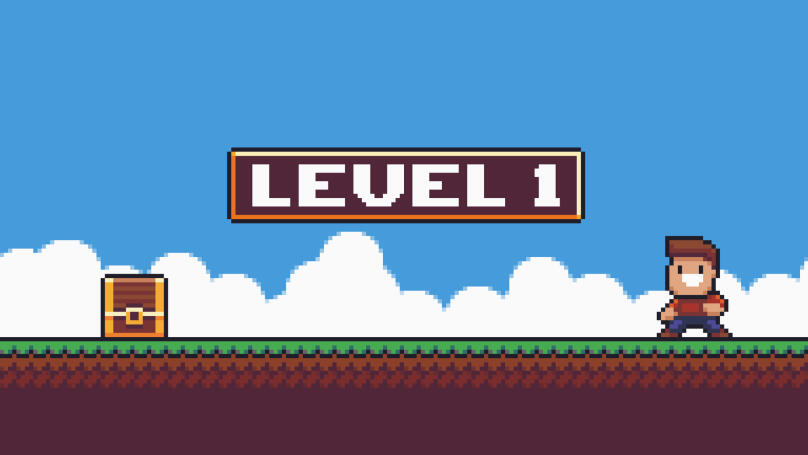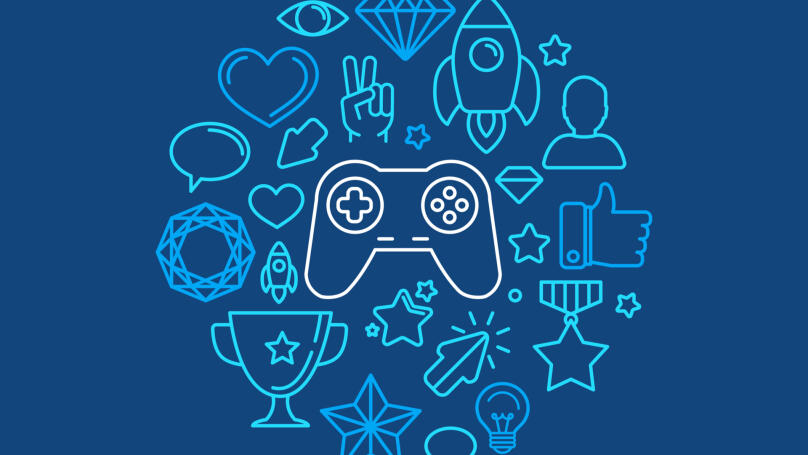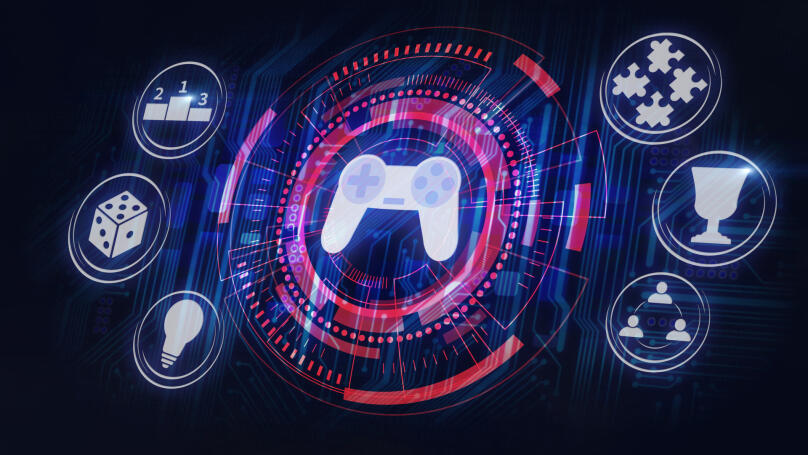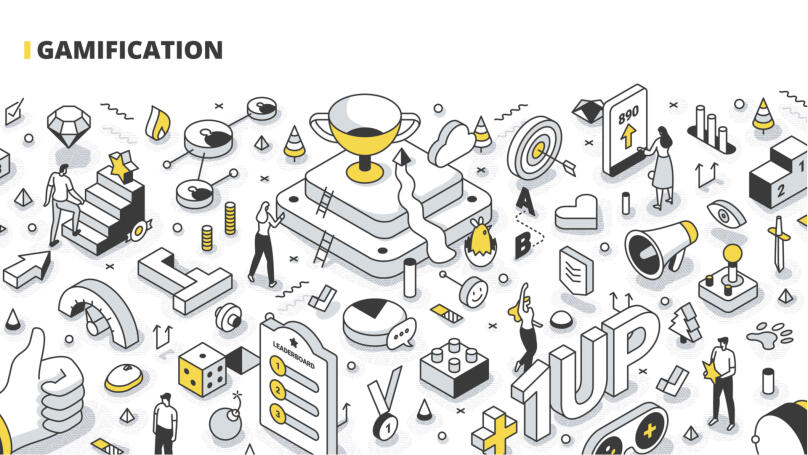Gamification
What is gamification?

Gamification is the application of game elements and mechanics in non-game processes and spheres of life. A gamification expert and the author of the book "Actionable Gamification: Beyond Points, Badges and Leaderboards" Yu-Kai Chou defines gamification as extracting all the fun, interesting and engaging elements from games and applying them to other activities to improve their performance.
The scope of gamification is extremely broad. The objective of gamification is determined by each company for its own case. But, in one way or another, all of them are about improving the efficiency of a particular process (boosting the quality of education, increasing sales or revenue or a number of subscribers, etc.) At the moment, gamification technology is one of the leading marketing trends. A variety of forms and variations, as well as the various ways of using it, make gamification universal and applicable for all types of businesses.
Why is gamification effective? Because playing games is a key way of exploring the world for everyone from the earliest years. The game form of interaction with the world is the most adaptive and involves the fundamental aspects of the human psyche. In addition, gamification is not an expensive way to improve business productivity.
Types of gamification

-
Structural gamification
Only the structure of the presenting the material, or the customer's route from newcomer to regular, is gamified. This kind of gamification engages the customer in the brand, encourages them to become familiar with it and explore its content. For example, each brand article read gives the customer a new status.
-
Content gamification
Only the content generated by the brand is gamified. For example, when articles hide various "Easter eggs", and attentive clients can find them and win a prize.
-
Digital gamification
The software and applications that customers use to interact with the brand are gamified. This is the most popular gamification type allowing you to manage the user experience.
-
Analogue gamification
Badge-based gamification. For example, a loyalty card or even a designer pass to a fitness club.
There are also internal and external types of gamification. The internal type focuses on optimizing the company itself and boosting its productivity while the external one mostly focuses on attracting customers and driving sales.
Gamification methods

- Loyalty programmes
Club cards, loyalty cards or discount coupons. These tactics strengthen communication with the company and encourage the customer to take a chain of actions rather than a single, target action. The process is repeated over and over again forming a long-term relationship with the brand.
- Ratings and rank table
Seeing your position in a rank table and comparing yourself with other users turns on a competitive element. This way, one customer is motivated by the desire to outdo another one. They can do so by interacting with the company more frequently.
- Progress scale
Visualizing the customer's progress in the relationships with the brand, training, product use, etc. The scale should show all the intermediate steps on this path and encourage the customer to reach the end. A good example is the LinkedIn profile completion scale.
- Points and icons
Points also can be used to monitor progress, and their certain amount is exchanged for a reward or a certain status. Icons are symbols that in some way indicate the completion of a particular task or reaching a new progress level. Both strategies are ways of encouraging and providing feedback in gamification.
- Level progress
Levels also can reflect user progress. Typically, they are interlinked with user rewards or status. The higher the level, the more solid the reward. Most often, the level method is used to improve the effectiveness of training, but it is also applicable to the regulation of the customer experience.
Gamification methods and models can be combined in different ways to maximize the effectiveness of gamification.
Gamification in business

In business, gamification should be based on the following principles of gamification:
- Reward. In any game, a reward for results is a must. It does not necessarily have to be material. Most importantly, it must cause positive emotions and can serve as a mark of distinction (or exclusivity). A reward is an incentive or to participate in the gamification, In other words, it's the motivation.
- Knowing the audience. What incentive will work exactly for your customers? What are their needs and interests? If the reward is chosen without knowing the audience, it may not work, and the gamification will fail. That's why you need careful audience research before gamification begins.
- The element of surprise. A good game can't be predictable. Sudden jolts and twists are the key to keeping customers' attention. Therefore, a gamification strategy should include various options for developing the game, a variety of statuses, rewards, etc.
- Demonstration of success. People prefer those gamification options in which they can talk about their achievements. This is exactly what various statuses, icons and other attributes are used for. Such things can be discussed in forums or reposted on social media.
Pros and cons of gamification in business

In simple words, gamification in sales allows you to strike many objectives at once:
- Drawing attention. You will attract a new audience, and heat the old one.
- Expanding the millennial and zoomer segment. People under the age of 27 have grown up playing video games, so they respond positively to the system of passing levels and getting rewards.
- Increasing activity. It results in a high estimation of algorithms. Social media favours blogs with a large number of likes and posts and shows your blog to a new audience more often.
- Increasing motivation. Customers will be more willing to interact with the brand and participate in various promotions and events.
- Targeted actions. Gamification encourages customers to buy, subscribe, repost, or do any other planned action (the goal of gamification is to motivate customers to do a targeted action).
- Training. Gamification teaches customers how to use your product.
- Positioning. Most often, gamification is based on a brand story. Subsequently, it then allows to form the right image and actively promote it.
- Personalizing your experience. Each customer will be able to take their own path in getting to know or using your product.
As a result, marketing gamification and its tools help to increase the company's revenue. Among the disadvantages of gamification, only the risk of monotony and the wrong choice of motivation (reward) can be found. But you can easily solve them both by regular actualization of the game and careful study of your audience. Thus, possible disadvantages are errors made only if gamification is incorrectly understood and applied.
Examples of gamification in business

- Schlotzsky's
A fast-food restaurant chain preparing the famous "Shlotzsky sandwiches" in the USA. To boost sales, the cafe chain has launched two games: The Original Stacking and Scratch & Match. The first game, which anyone can download to their phone, asks you to assemble an edible burger of randomly falling ingredients. The second game is a classic lottery. You can receive a ticket by entering a special code in the check after buying a sandwich. If you win in any of the games, your virtual rewards can be exchanged for real ones in any restaurant.
- McDonald's
This famous fast-food chain regularly conducts the Monopoly action. Together with the tray, customers are given a sheet of Monopoly game, where a certain number of cards of a certain colour must be collected. The collected cards give the chance to win a prize - a trip or, say, a new iPhone. However, the customer never knows the colour of the card that will be in the food they buy, so a lot depends on their luck and how often they buy from McDonald's. This way, McDonald's has multiplied its footfall and profits.
- Not Your Average Joe's
This American restaurant chain has opted for interior gamification. To motivate their staff to serve guests better, restaurant managers developed Muse, a company app for staff. In fact, it was a rating system. Each employee could see the number of checks they have closed during a certain period, the amount of tips earned and their position in the ranking among the other employees of the restaurant chain. Employees who hit Muse's top could count on extra time off, bonuses and other rewards.
- Duolingo
One of the most popular applications for learning English. It contains the following elements of gamification:
- The mechanics of choosing a level of complexity. That is, a user can indicate their language level before the study begins. At the same time, they can pass any level as an external student by passing the corresponding test and proving their readiness for a more complex round (in fact, proving their language knowledge). The chance to skip a module allows advanced students to not get bored.
- Battles with "bosses". Before you go to the next level, you have to cope with a complex task. Beating such a "boss" helps users realise their progress and opens up access to new opportunities.
- Icons. Each completed level is displayed in the user profile as a unique icon. These icons show what the user has learned. However, the icons may pale and even disappear, if the user has not practised their knowledge for a long time.
- Emerald Street
The rental company Emerald Street has gamified email newsletters. The user gets a larger discount if they read newsletters and click on links. The more clicks, the higher the user level and the bigger the discount.
- Nike
The Nike+ Running App displays your run statistics and measures how far you have progressed to your goal. Nike+ can be integrated with social networks, which allows users to organize whole challenges and share their achievements. The app also can recommend products to the user, depending on their pace and running style.
Gamification in Marketing: a check-list to assemble your game

It can be difficult for beginners to understand what is related to the mechanics of gamification, and what is not. Any game consists of a set of different game components. In different combinations, they can produce different results. To implement gamification, choose 6-10 components that match each other:
- Personalized member avatars
- Points
- Levels or statuses
- Icons (or other symbols for participant activity)
- Quests or tasks that are limited in time or member status
- Closed content (Open when certain conditions are met)
- Current (updated) ratings
- Items to collect
- Virtual currency
- Rewards purchased with points or virtual currency
- The ability to create teams and compete
- Social online interaction
- Battle (performing a task)
- Boss battle (the most difficult task you need to complete in order to move up to the next level in the system or ranking)
- Visualization of processes or participants
- External and internal digest of success (including on social media)
- Information content for promotion in the game























